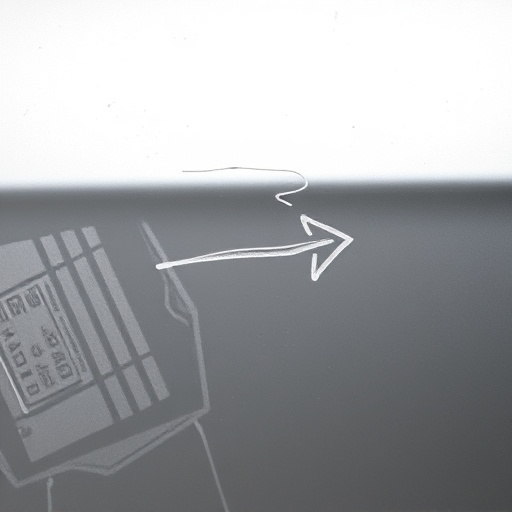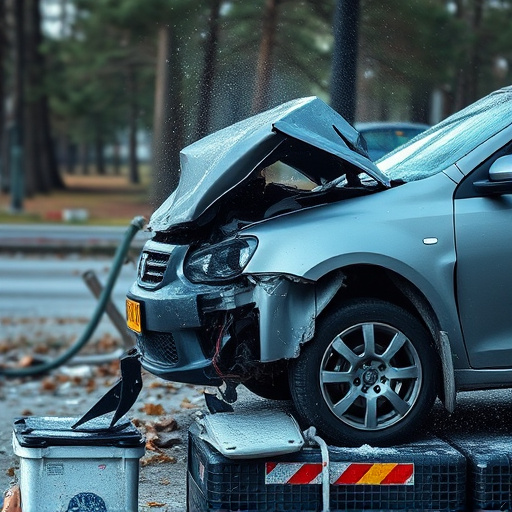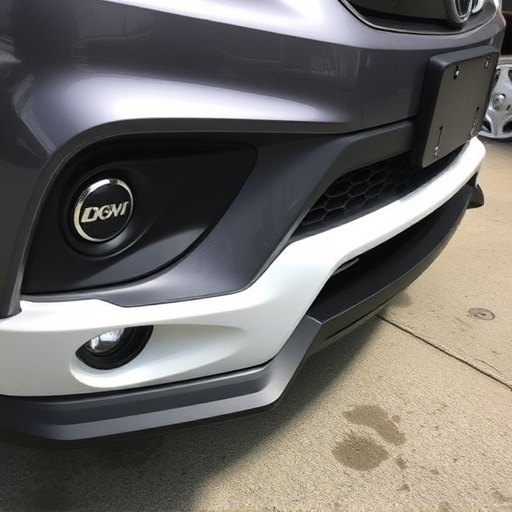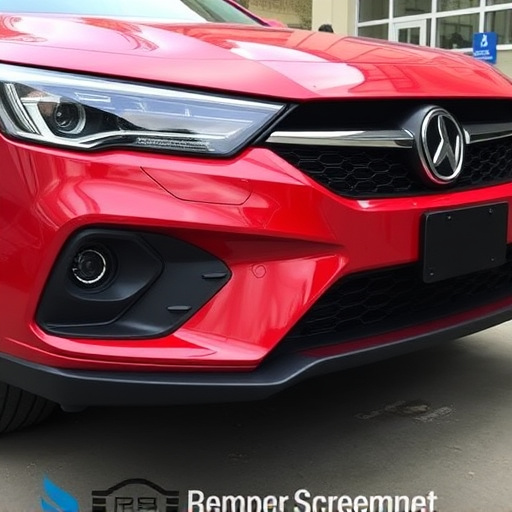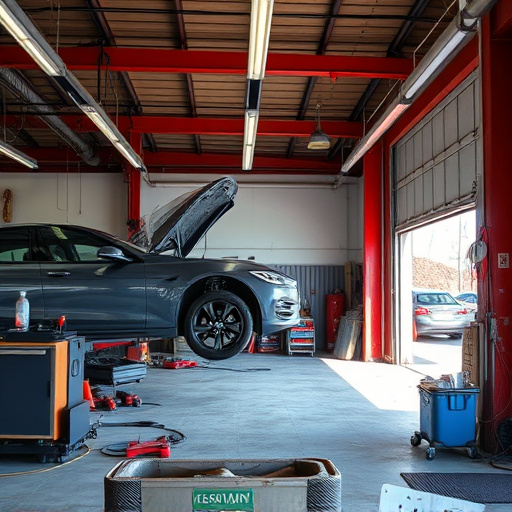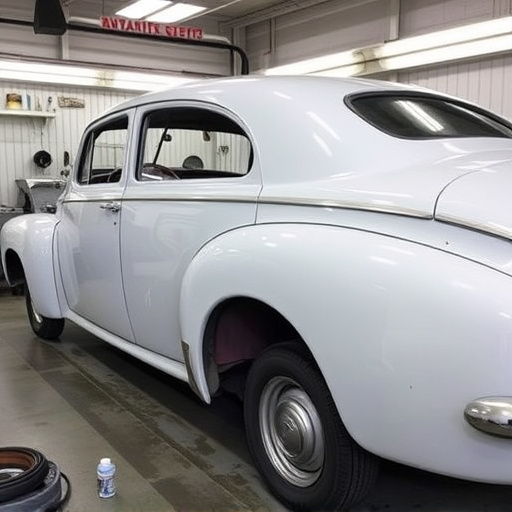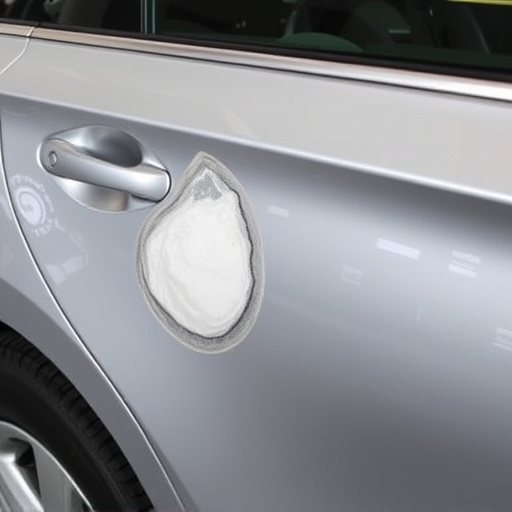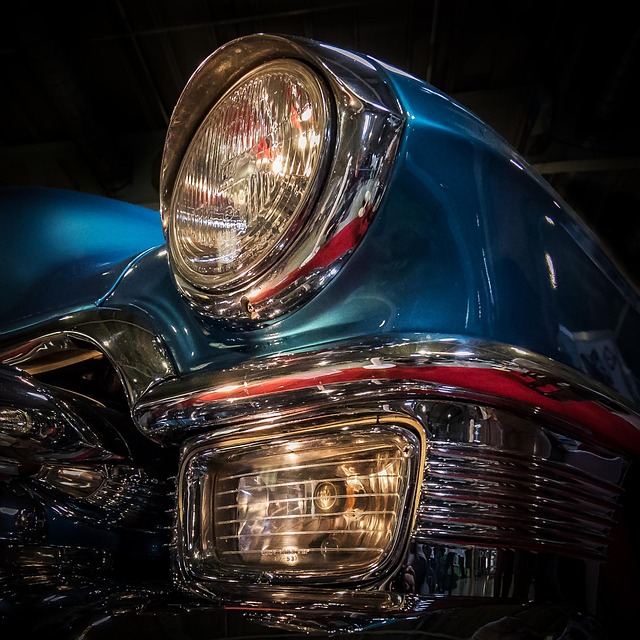Waterborne paint technology is transforming vehicle repair, especially in collision centers, by offering an eco-friendly alternative to solvent-based paints. This technology uses water as a carrier, reducing VOC emissions and improving air quality. With low viscosity, improved flow, faster drying times, enhanced adhesion, and superior corrosion resistance, waterborne paint provides smoother finishes and durable repairs. Its precision capabilities, versatility, and environmental benefits make it a top choice for high-quality auto body repairs and paintless dent repair, ensuring flawless results with minimal effort.
Waterborne paint technology is transforming repair precision, offering a superior alternative to traditional coatings. This innovative approach leverages water-based solutions, providing a cleaner, safer, and more environmentally friendly painting process. In this article, we explore the fundamentals of waterborne paint technology, delve into its advantages for repair work, and uncover how it enhances precision and efficiency across various applications, making it an indispensable tool for professionals seeking top-notch results.
- Understanding Waterborne Paint Technology: The Basics
- Advantages of Waterborne Paint for Repair Work
- Enhancing Precision and Efficiency in Repairs with Waterborne Paint
Understanding Waterborne Paint Technology: The Basics

Waterborne paint technology has emerged as a game-changer in the realm of vehicle repair, particularly in collision centers and car collision repair services. Unlike traditional solvent-based paints, waterborne paints use water as the primary carrier instead of volatile organic compounds (VOCs). This eco-friendly approach not only reduces the environmental impact but also offers superior performance characteristics for precise repairs.
In terms of application, waterborne paint technology provides a smoother, more even finish due to its low viscosity and improved flow. This precision in application translates directly into better repair outcomes, especially in complex vehicle repair scenarios. Moreover, these paints offer enhanced adhesion, faster drying times, and superior corrosion resistance, making them ideal for maintaining the longevity of repaired vehicles. As such, adoption of waterborne paint technology in collision centers is not only beneficial for the environment but also ensures high-quality, durable repairs for customers seeking top-notch vehicle repair services.
Advantages of Waterborne Paint for Repair Work

Waterborne paint technology offers numerous advantages for precision repairs in car paint services and auto body repair. Unlike traditional solvent-based paints, waterborne options are environmentally friendly, producing lower volatile organic compound (VOC) emissions, which improves air quality both during application and curing processes. This makes workshops safer for workers, especially in enclosed spaces like paint booths, eliminating the need for intense ventilation.
Moreover, waterborne paints provide a smoother finish with better flow and wetting properties, allowing for more precise applications, particularly in complex shapes or hard-to-reach areas. Their fast drying times and excellent adhesion to various surfaces make them ideal for paintless dent repair techniques, ensuring a flawless final product. This technology’s versatility makes it a preferred choice among professionals, offering both efficiency gains and enhanced aesthetic outcomes in auto body repair.
Enhancing Precision and Efficiency in Repairs with Waterborne Paint

Waterborne paint technology is transforming the landscape of car collision repair and auto collision repair processes. This innovative approach offers significant advantages in enhancing precision and efficiency during dent removal and other repair tasks. Unlike traditional paints, waterborne formulas are environmentally friendly and provide superior coverage, ensuring that every dent and scratch is accurately addressed.
The technology’s precision comes from its ability to deliver fine, controlled particles of paint, allowing for meticulous work on complex auto body shapes and curves. This level of detail not only enhances the overall aesthetics but also guarantees a perfect color match across the entire vehicle. With waterborne paint, auto collision repair professionals can save time and effort, enabling them to focus more on intricate finishing touches and achieving flawless results in every car collision repair project.
Waterborne paint technology offers a significant advantage in repair work due to its superior precision and efficiency. By leveraging the basic principles of this innovative approach, professionals can achieve more accurate results, reduced waste, and faster turnaround times. The advantages outlined in this article highlight how waterborne paint is transforming the landscape of repairs, making it an essential tool for modern technicians. Embracing this technology ensures that repair work meets the highest standards of quality and consistency.
